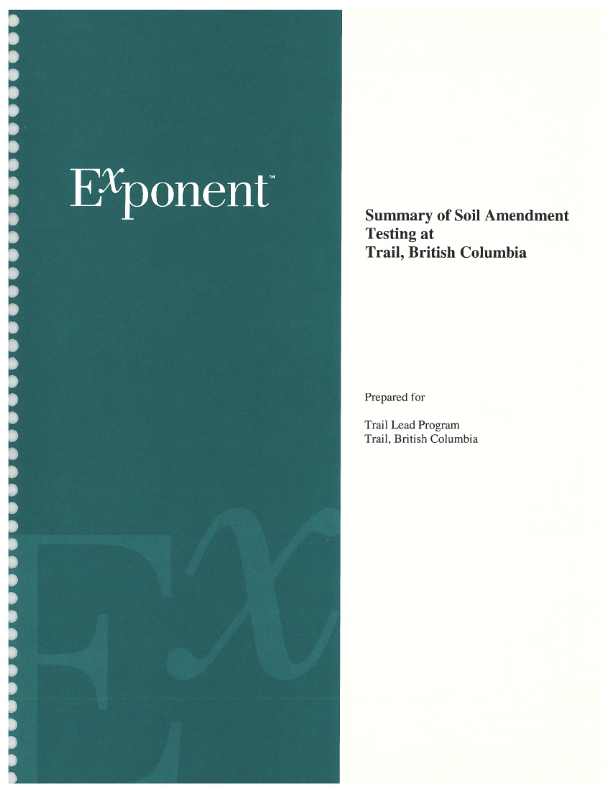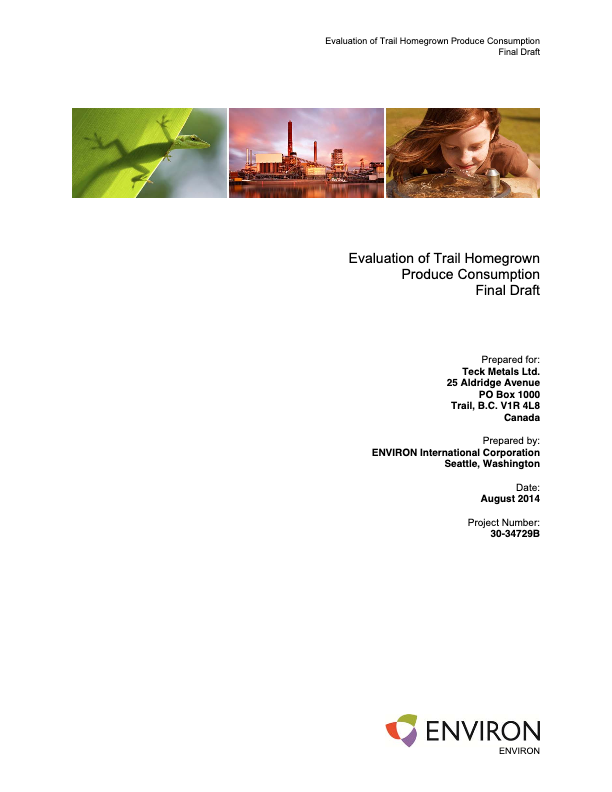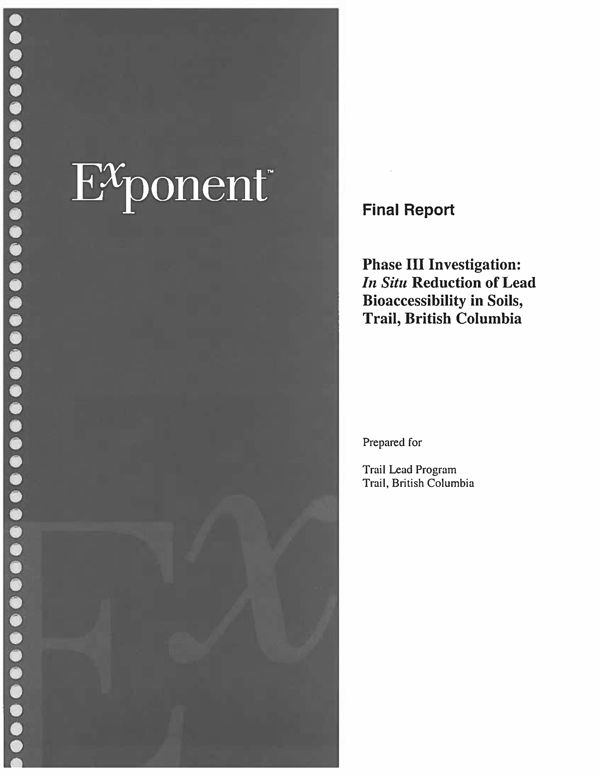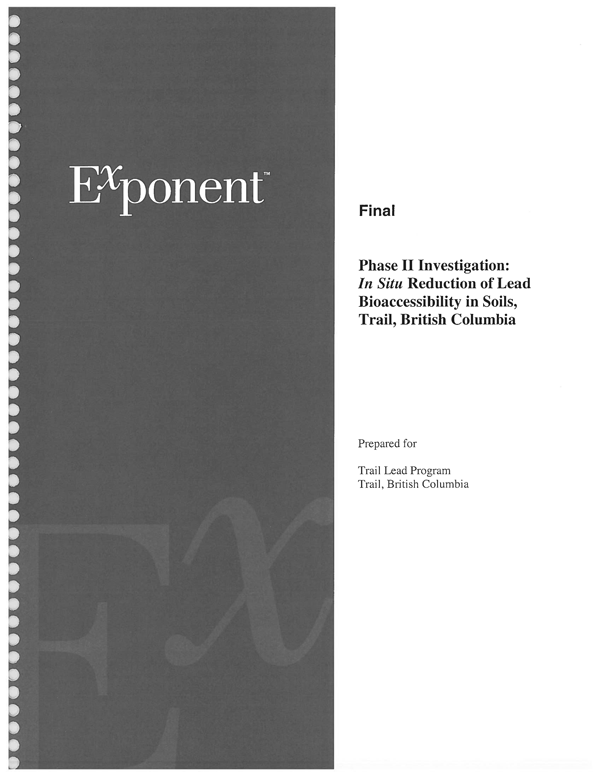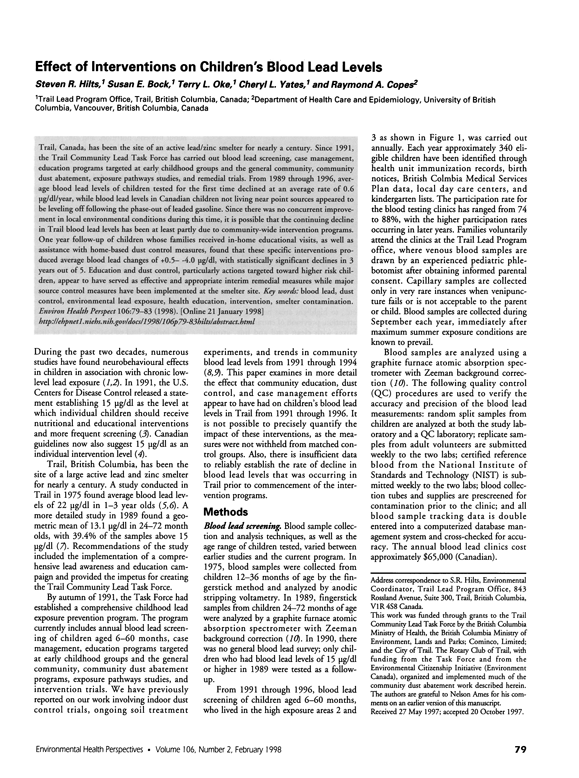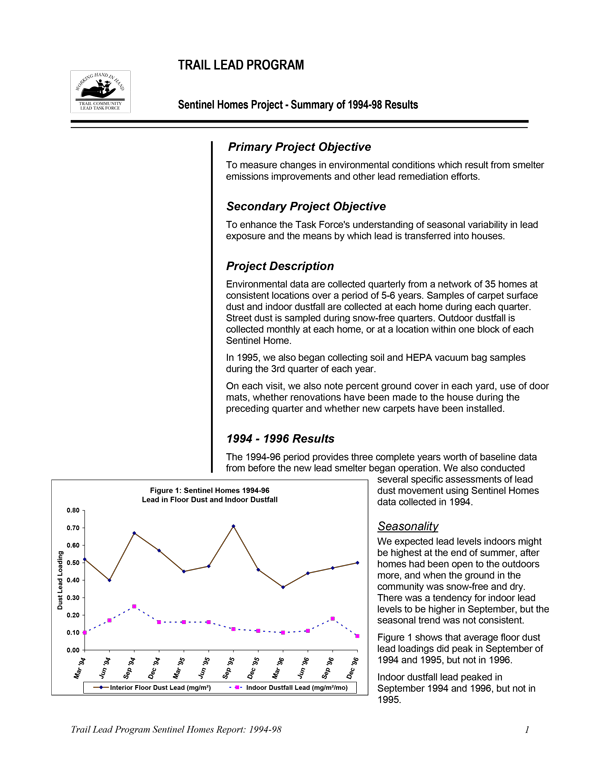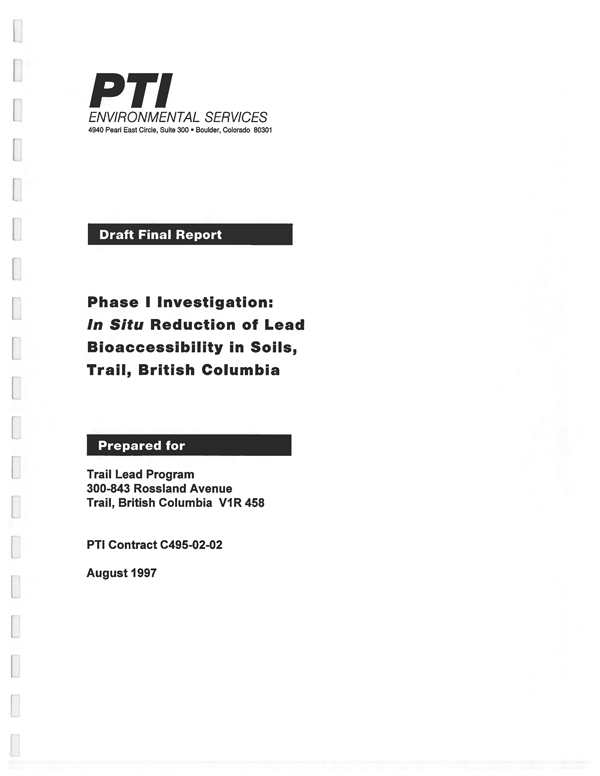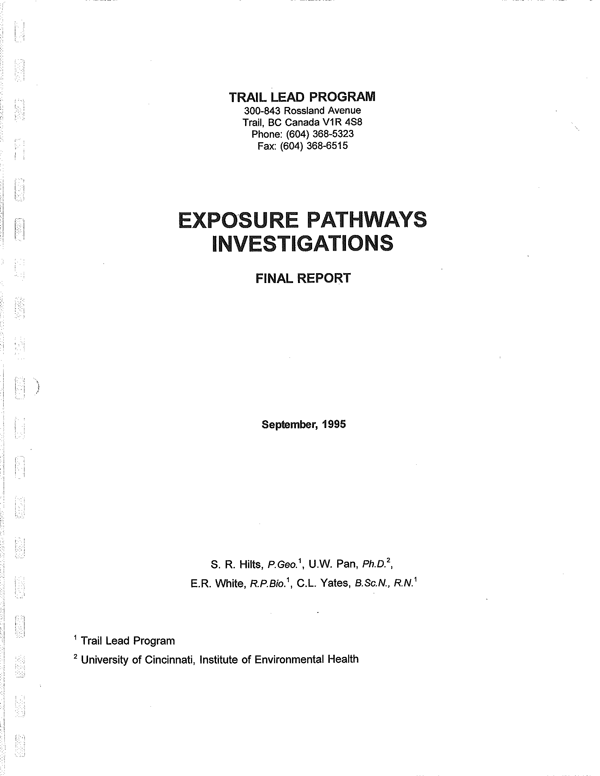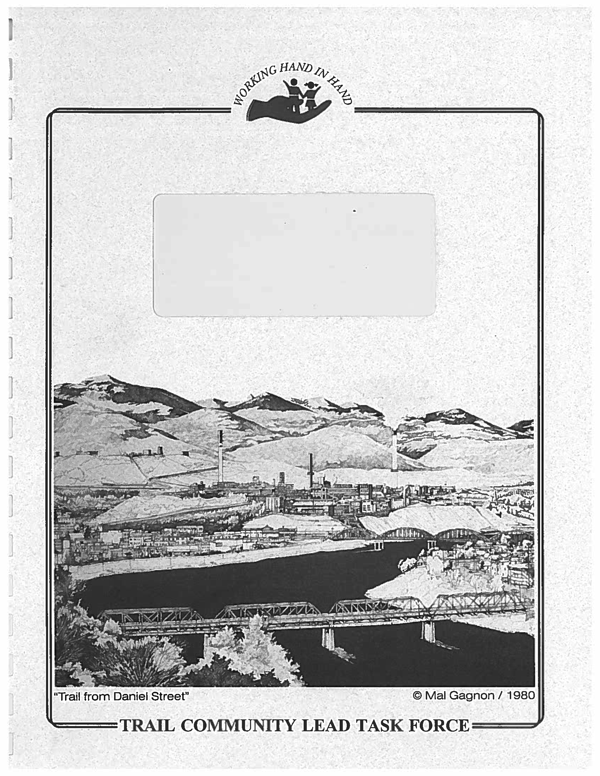Summary of Soil Amendment Testing at Trail, British Columbia (2000)
This report recaps the first three phases of this work, which were conducted in the laboratory, and presents the results of the final soil amendment trials, which were conducted in the field. Find out whether in situ soil treatment was discovered to be a feasible approach to reducing the risk posed lead in Trail soils
Summary of Soil Amendment Testing at Trail, British Columbia (2000) Read More »

